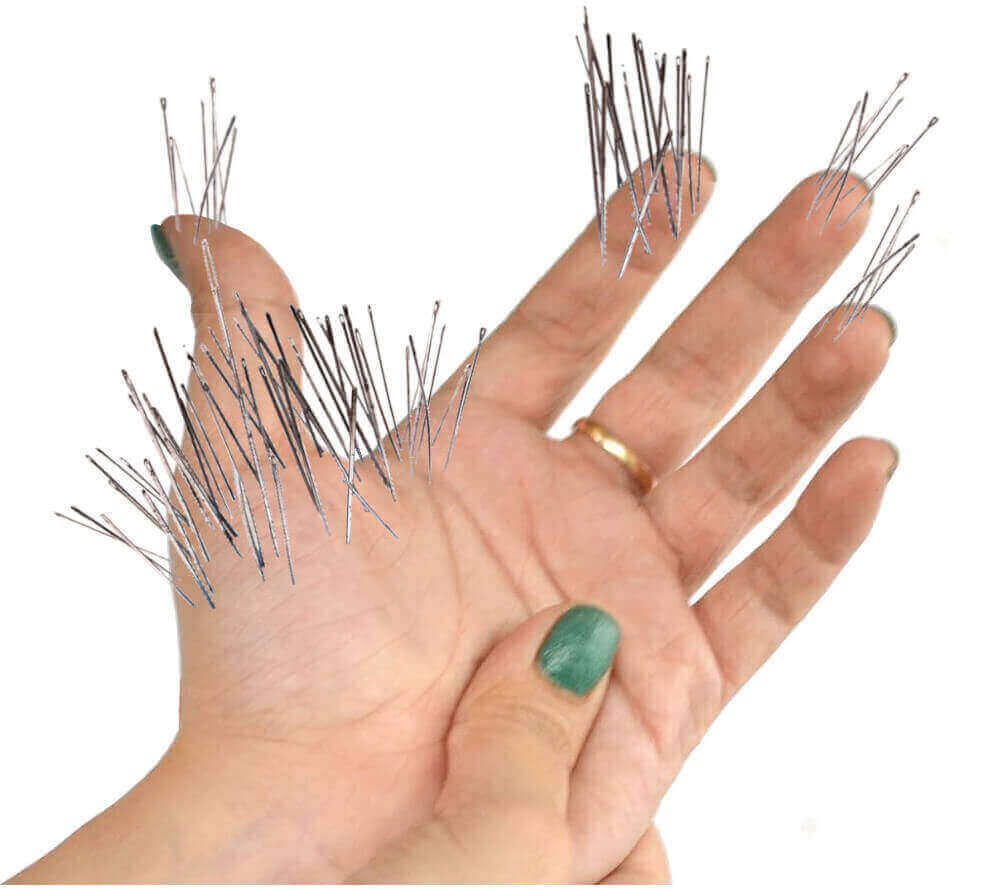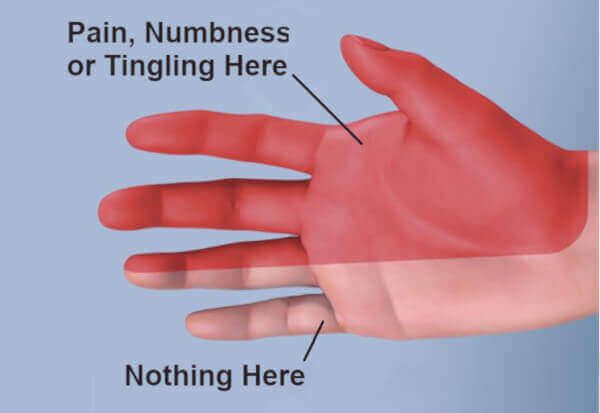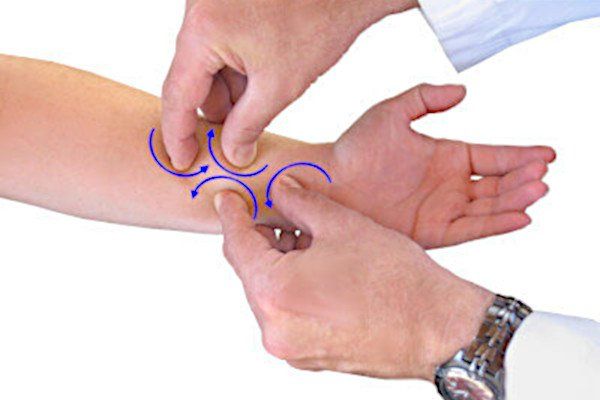How to Stop Carpal Tunnel Syndrome
Here's how to stop carpal tunnel syndrome in its tracks. It's a 5-step formula that absolutely works when properly followed. And it's not complicated or time-consuming!
- First look at what you're doing that stresses your hand (working or playing) and avoid or curtail that activity.
- Rest your hand periodically when working.
- Wear a night brace while you sleep.
- Twice a day, perform a myofascial release massage on your wrist area.
- Perform finger and hand stretching exercises 3-4 times a day.
That's it!
Mild to moderate symptoms will be gone in 3-6 weeks. More severe symptoms will take a bit longer, depending on how long you've had them. (The longer you've had symptoms, the longer it takes for them to disappear.)
Remember, the number one contributor to getting carpal tunnel syndrome is
your occupation.
So once you've identified what's causing the problem, take measures to discontinue or at least modify the activity.
For instance, truck drivers are prone to getting carpal tunnel. So if you drive for a living, at the first sign of your
hands going numb, get driving gloves and a padded steering wheel cover.
Then you need to prevent carpal tunnel from ever coming back. (What good will it be to stop carpal tunnel only to have it return?) In fact,
about 40% of carpal tunnel sufferers see symptoms come and go in their lifetime. That's because they stop symptoms effectively, but then
re-injure their hands.
Therefore, once you stop carpal tunnel, you have to prevent it from returning. And any
good carpal tunnel
prevention program requires that you realize what caused the disorder in the first place.
Carpal tunnel is a type of hand injury
Most people know that carpal tunnel syndrome causes hand or finger pain, numbness, tingling, and weakness. These are the initial signs most people see as the condition begins to take effect.
The disorder can appear for many reasons. But by far, the most common reason is due to
repetitively stressing your hand and fingers.
This is why some doctors categorize carpal tunnel syndrome as a type of repetitive stress injury.
A repetitive stress injury means damage is produced by rapid and forceful movements with your hand and fingers. It occurs because
over-stressing fingers and hands causes the tendons to inflame and swell. (These tendons are responsible for curling your fingers.) So obviously, any forceful grip-and-release motion (for example) will produce a stress injury to these tendons.
At first, the symptoms only bother you at night while you're trying to sleep. By the time symptoms are a problem during the day, the condition has already advanced. Now you must take special actions to get rid of it because it will almost certainly worsen. Therefore, knowing how to stop carpal tunnel starts by
knowing how to prevent if from happening again.
What are the symptoms?
As the tendons in the wrist joint get more and more stressed, they start to swell. As they do, they push on the
median nerve lying adjacent to them.
This results in an irritated nerve.
And that irritation is what produces all of the signs and
symptoms of carpal tunnel syndrome. These include finger and hand:
- pain
- numbness
- tingling (pins & needles)
- burning
- soreness
- weakness
- shooting electric shocks
Most of these sensations are on the palm side of in the hand and fingers – especially the thumb (see image below). Symptoms can come and go, or be constant. In time, symptoms usually reach the
severe stage. At that point it's even more difficult to treat the condition.
Who gets carpal tunnel syndrome?
Carpal tunnel syndrome is commonly regarded as an
occupational disorder. That means a person's
job is the likely culprit in causing the hand injury.
Essentially, your job dictates how you use your hands. If it involves a lot of forceful and repetitive movements, especially rapid grip-and-release activity, then you’re at high risk for getting carpal tunnel syndrome.
We also know from
numerous medical studies that people who spend a lot of time using a mouse and
keyboard are likely to suffer from carpal tunnel. Also at risk are workers in occupations like:
As a general rule, if you make multiple and forceful hand movements for more than 6 hours a day, you're nearly 4 times more likely to get this disorder.
Read below for the steps to stop carpal tunnel before it worsens.
Here's how to stop carpal tunnel
Right Now
Every doctor will tell you that the
MOST important step in stopping carpal tunnel is to
AVOID
what's causing it. In fact, if you're just starting to see the
first signs of this disorder, avoiding the repetitive hand activity will most likely stop symptoms completely.
This fact is so important that the
American Academy of Orthopedic Surgeons recommends
avoidance
as the first step in carpal tunnel prevention.
Once you've identified the cause of the condition, you can then treat the symptoms using the methods outlined below. They are:
- rest
- exercises
- bracing
- massage
But again, identify the cause
first. If you go back and re-stress you hand after treating, you'll just start the cycle all over again.
Identifying high risk activities
Rest
Carpal tunnel stretching exercises
Night bracing
Myofascial release massage
Conclusion
If you want to know how to stop carpal tunnel syndrome, start by identifying what injured your hand in the first place. Then begin the proper therapy program of rest, exercise, bracing and message. These ar proven methods of eliminating symptoms and keeping them from returning.










